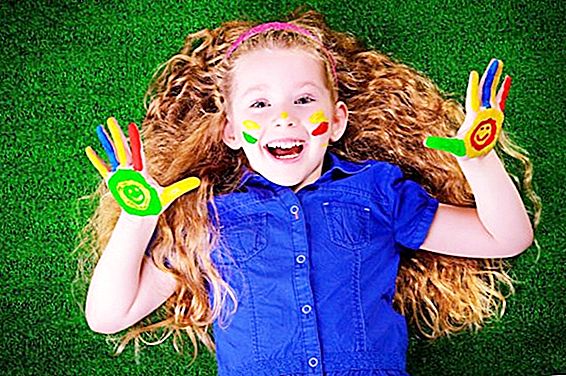Does your kid love to create? Drawing pictures on the wallpaper, drawing patterns on the floor, laying out people from pasta on the table? Do you blame him for such tricks or vice versa approve of them, appreciating the inexorable pursuit of beauty? Psychologists still insist on encouragement. After all, ready-made creators are not born, but become! And here it all depends solely on the parents.

It is no coincidence that almost all modern methods in preschool institutions necessarily contain creative activities as part of the educational program. Indeed, creativity plays a very important role in the development of the baby. Almost all parents, choosing what to do with their child, will first of all think about drawing, modeling, applications. Moreover, in stores now you can find the most diverse sets for children's creativity. But it’s not enough to find a type of occupation for the baby - one must also maintain in the family a special atmosphere of creativity in which the child will grow.

Paintings on a plate
You can start with the most ordinary household items. For example, what should food look like on a plate? It would seem that simple and healthy baby food is not a particularly fascinating sight. But in fact, after the baby fully switches to the menu of "adult" dishes, parents can turn each meal into an entertaining surprise.
The whole charm of the process is to make funny pictures and unusual figures from the most common products present in every kitchen. But this is the main essence of creativity - from simple, unremarkable objects to create works of art.

Thus, boiled eggs turn into animals, greens and lettuce bloom in forests and orchards, and you can create fish or snake scales from slices of cucumbers or olives. From a traditional fried egg or sandwich using slices of bread, cheese or green onions, muzzles with different expressions are created. Parents will not have to persuade the baby to eat such dishes - he will not think what is good for him and what is not so when he sees such a variety on a plate.
You can not be limited to creating figures, but go further. Dishes on the table can become the basis for the versatile development of the child. For starters, you can come up with a story about the characters you created on a plate. For example, a dill (spread out on a salad) a mouse (an egg) and a cucumber (cut into thin slices) were met in the forest. What will they say to each other? What will they do next? After the meal, invite the peanut to draw these characters and come up with a continuation of the story. So gradually the imagination will develop, and this is the basis of any creativity.

With harmony in life
Adults can instill in a child basic ideas about harmony and color compatibility literally in any domestic situation. Here the baby wakes up in the morning and chooses clothes for today. Which t-shirt will we choose? Red? Good. And what shorts go best with a red tank top? And what color tights is better to choose for them?
Does the peanut help you take off your clothes after drying? Why not lay out your towels and clothes according to the colors of the rainbow? For an older kid, another principle can be proposed: to send things with warm shades in one pile, and with cold ones in another. By folding towels, parents can introduce the baby to the basics of origami. Indeed, with large and soft panels, it is much easier to handle even inept handles than with a thin paper sheet, where it is important to make small and precise folds.
